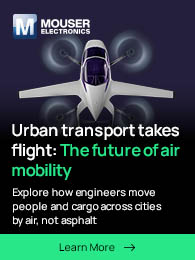A new report from the Association of Energy Engineers (AEE) warns that three-quarters of energy professionals worldwide say their sector is facing workforce shortages, a figure that rises to 90% in regions such as the Middle East and North Africa. The 2025 Energy Jobs & Market Trends Survey highlights a critical mismatch too: demand for efficiency remains steady, but the people needed to deliver it are not available worldwide.
According to energy experts at Exergio, an AI-based energy optimization company focusing on commercial buildings, it takes years to train new specialists, but novel AI solutions should be employed today.
“The industry can’t hire its way out of this gap fast enough, it’s simply impossible” said Donatas Karčiauskas, CEO of Exergio. “And that is why AI is the only lever we can pull today to make an immediate difference while new professionals are trained.”
The AEE report warns the situation is worsening as over one-third of professionals plan to retire within the next decade. In North America alone, nearly a quarter expect to exit within five years.
At the same time, demand is not slowing. Despite global political turmoil and economic challenges, job opportunities for energy professionals remain consistent, report reveals. Karčiauskas warns that this “invisible bottleneck” may be one of the reasons climate goals are slipping further out of reach.
Across the industry, companies are already turning to AI-based energy efficiency tools to bridge the gap. Karčiauskas points out the shift is clear in facility management itself.
“In the past, one manager with a team would run a single hotel. Now a single manager oversees multiple buildings. Digitalization is inevitable, but we need to speed it up,” he said. “When we built Exergio, we saw that waste was often due to poor management practices, not outdated hardware. That’s where algorithms can deliver instant savings and help buildings become more sustainable too.”
The AEE survey shows that energy reduction is the top strategic priority for 81% of organizations, a stable level despite wider market pressures. Yet almost half of companies still lack a decarbonization strategy.
For them, AI may provide a rapid starting point, Karčiauskas adds.
“Much of what wastes energy in the buildings can be automated through AI tools with human oversight. It would free professionals to focus on strategic tasks rather than daily micro-management. You would be surprised to see how many operations are run badly, even in newly built assets – only AI can spot these issues.”
According to the report, more professionals are warming to the technology. In 2025, 51% rated AI implementation as “extremely” or “very” important for efficiency.
However, some of the issues energy professionals face have been consistent over years. Government funding limitations are now a growing concern, reported by 46%, and budget pressures are back on the rise, cited by 73% of respondents, reversing last year’s improvement.
“With AI-based platforms, we’re solving two issues at once: the shortage of specialists and the high cost of deep renovations. Energy waste can be cut by up to 30% simply by letting algorithms optimize HVAC, lighting, and sensor systems. It’s far cheaper than tearing out hardware, and it works today. Especially when there are no experts to deal with it – we can’t just keep the buildings alone,” concluded Karčiauskas.
















